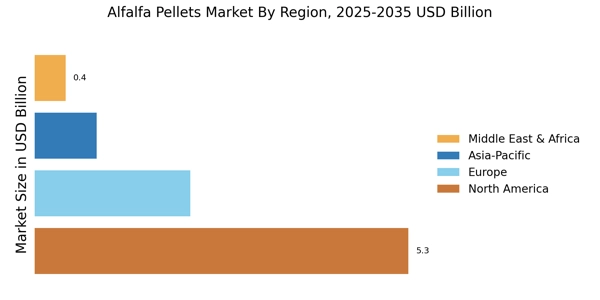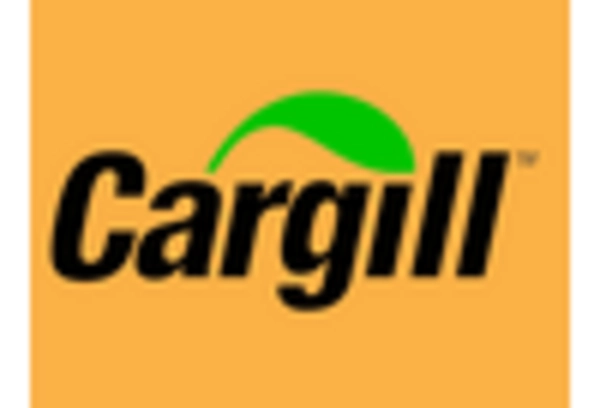Growing Export Opportunities
The Alfalfa Pellets Market is poised for expansion due to growing export opportunities. Several countries are increasingly importing alfalfa pellets to meet their domestic feed requirements, driven by the need for high-quality animal nutrition. For instance, regions with limited agricultural resources are turning to imports to ensure a steady supply of nutritious feed. The export market for alfalfa pellets has shown a compound annual growth rate of approximately 5% over the past few years. This trend indicates a robust demand for alfalfa pellets in international markets, which could provide significant growth avenues for producers. As the Alfalfa Pellets Market capitalizes on these export opportunities, it is likely to see enhanced profitability and market reach.
Shift Towards Organic Farming
The Alfalfa Pellets Market is benefiting from a notable shift towards organic farming practices. As consumers become more health-conscious, there is a growing preference for organic products, including animal feed. Alfalfa pellets, often produced without synthetic fertilizers or pesticides, align well with organic farming standards. This trend is reflected in the increasing acreage dedicated to organic farming, which has seen a rise of approximately 10% in recent years. Farmers are increasingly adopting alfalfa pellets as a sustainable feed option that supports organic livestock production. The demand for organic alfalfa pellets is expected to surge, thereby propelling the Alfalfa Pellets Market forward as it caters to the evolving preferences of both farmers and consumers.
Increasing Livestock Population
The Alfalfa Pellets Market is experiencing growth due to the rising livestock population across various regions. As the demand for meat, dairy, and other animal products escalates, farmers are seeking high-quality feed options to enhance productivity. Alfalfa pellets, known for their rich nutrient profile, serve as an excellent feed source, providing essential proteins and vitamins. According to recent agricultural reports, the livestock sector is projected to expand, with an estimated increase of 2.5% in livestock numbers annually. This trend is likely to drive the demand for alfalfa pellets, as farmers aim to meet the nutritional needs of their animals efficiently. Consequently, the Alfalfa Pellets Market is poised for significant growth as producers adapt to the increasing requirements of livestock feed.
Rising Awareness of Animal Health
The Alfalfa Pellets Market is also influenced by the rising awareness of animal health and nutrition. Livestock producers are increasingly recognizing the importance of providing balanced diets to enhance animal well-being and productivity. Alfalfa pellets, rich in fiber and essential nutrients, are being adopted as a key component of livestock diets. Research indicates that proper nutrition can lead to improved growth rates and overall health in animals, which is crucial for maintaining competitive advantage in the market. As a result, the demand for high-quality alfalfa pellets is likely to increase, reflecting a broader trend towards prioritizing animal health in agricultural practices. This heightened focus on nutrition is expected to drive the Alfalfa Pellets Market as producers seek to optimize their feed strategies.
Technological Innovations in Production
The Alfalfa Pellets Market is witnessing advancements due to technological innovations in production processes. Modern techniques, such as precision agriculture and automated pelletizing systems, are enhancing the efficiency and quality of alfalfa pellet production. These innovations allow for better resource management, reducing waste and improving yield. For instance, the implementation of data analytics in farming practices has shown to increase productivity by up to 15%. As producers adopt these technologies, the quality of alfalfa pellets improves, making them more appealing to livestock farmers. This trend is likely to stimulate growth in the Alfalfa Pellets Market, as enhanced production methods meet the rising demand for high-quality feed.


















Leave a Comment